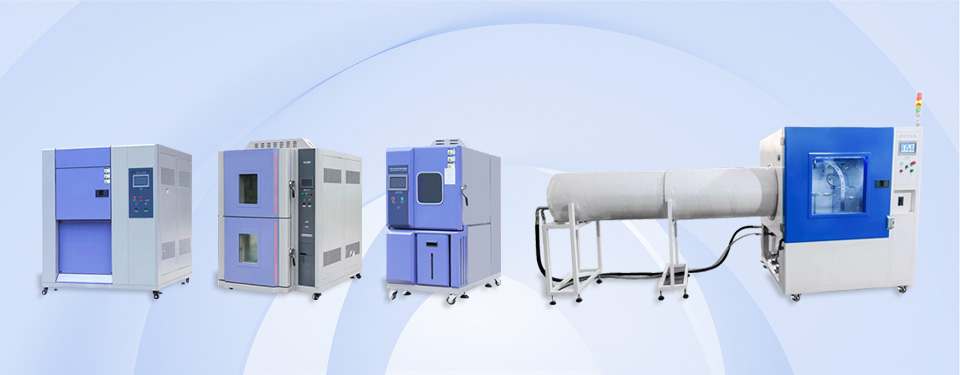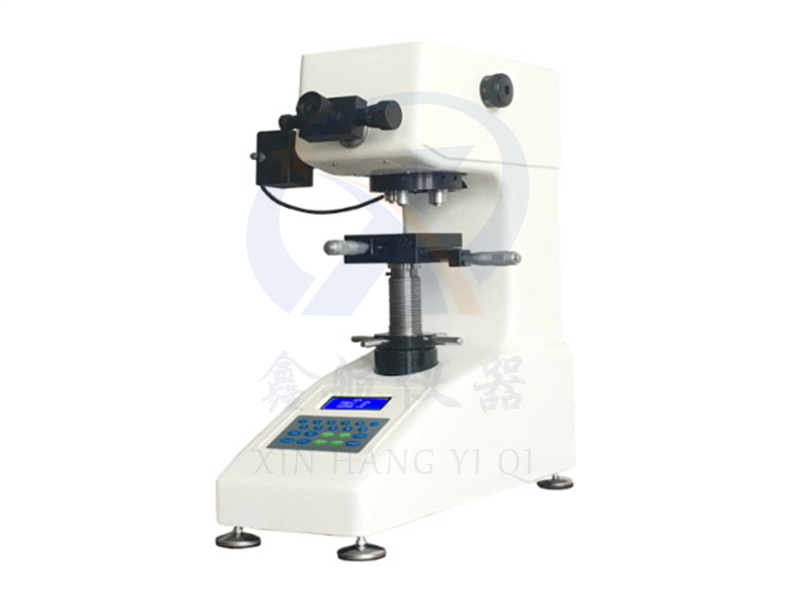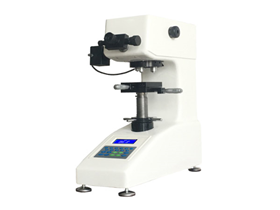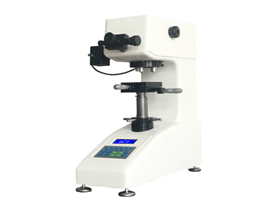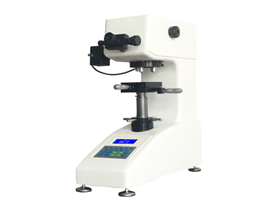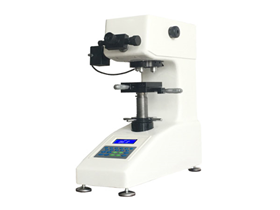Overview:
Using an LCD display screen, the hardness scale Vickers (HV) and Knoop (HK) can be switched. The testing process is automated, easy to operate, with a high-definition optical system. The brightness of the light source can be adjusted by 20 levels, and there are multiple hardness conversion functions. The diagonal length D1 and D2 values can be measured using a micrometer eyepiece, and the hardness value can be displayed on the LCD after pressing the key input; The automatic turret type objective and pressure head can automatically switch for accurate positioning. Integrated cast aluminum body, without deformation or displacement, with a weight loading structure, stable performance, high measurement accuracy, and good repeatability.
Main functions:
● Using an LCD display screen, it can switch between Vickers (HV) and Knoop (HK) hardness scales;
The experimental process is automated and easy to operate;
The brightness of the high-definition optical system light source can be adjusted by 20 levels;
Multiple hardness standard conversion functions;
● Encoder inputs for diagonal length D1 and D2 values to reduce human reading errors;
The objective lens and pressure head can automatically switch, ensuring accurate positioning.
Application scope:
Suitable for testing metal structures, metallurgy, and metallographic research, including small parts, thin sheets, metal foils, wires, thin hardening layers, and surface coatings of electroplated coatings, quenching hardening layers, nitriding layers, steel, non-ferrous metals, ceramics, alloys, heat treatment, carbonization, with thicknesses up to 3 μ Measurement of the depth of the hardened layer for extremely small and thin parts of m.
Vickers test principle:
The Vickers hardness test is conducted by using a 136 ° diamond indenter to press a specified test force (F) into the surface of the tested object. After maintaining the test force for a specified period of time, the test force is removed, and the diagonal (d) of the indentation on the surface of the specimen is measured using a micrometer eyepiece. The average pressure (N/mm2) borne by the conical surface area of the indentation is calculated, which is the Vickers hardness value. (See Figure 1.1 for details).
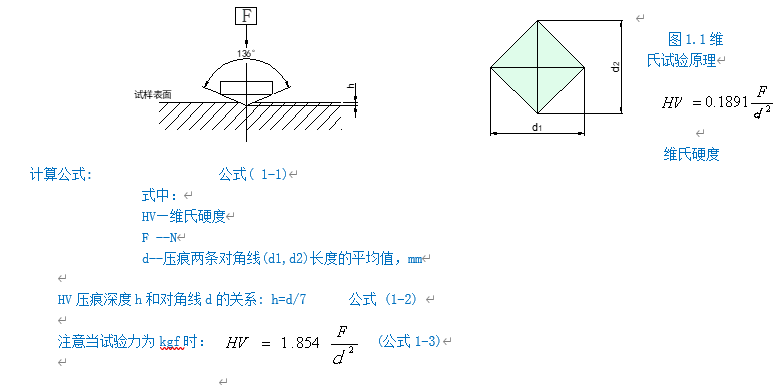
Appearance of hardness tester host:
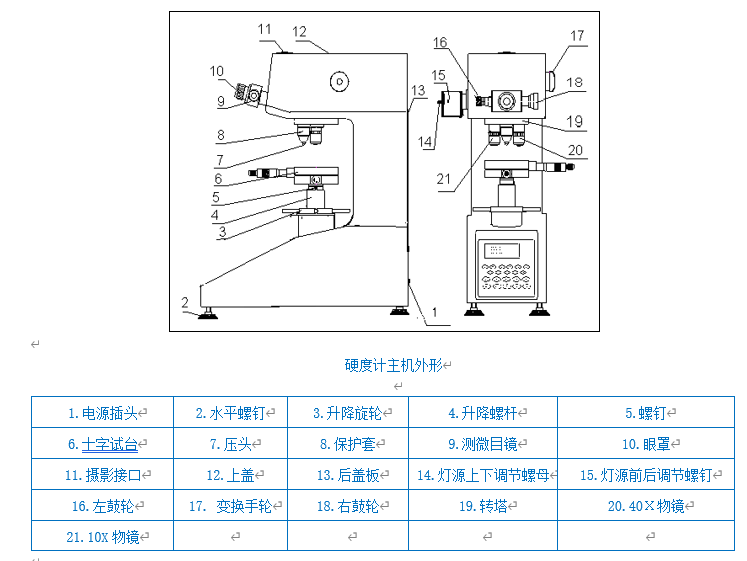
Introduction to panel key functions:
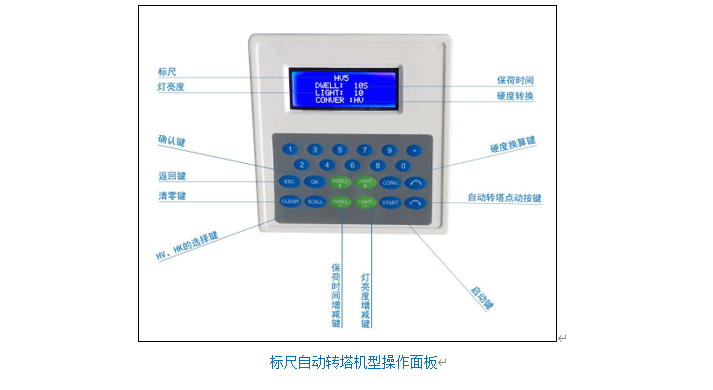
Use of hardness tester:
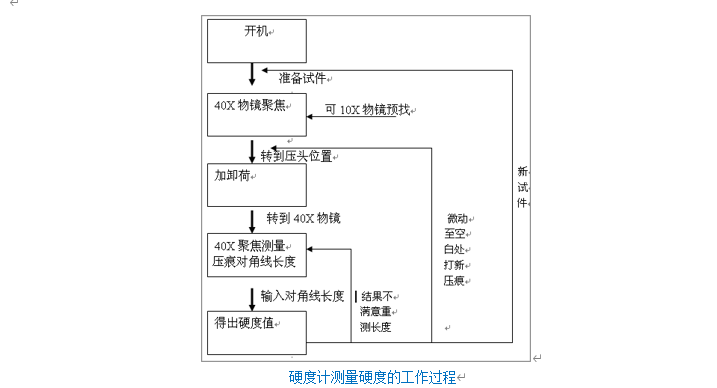
Specific measurement method for indentation:
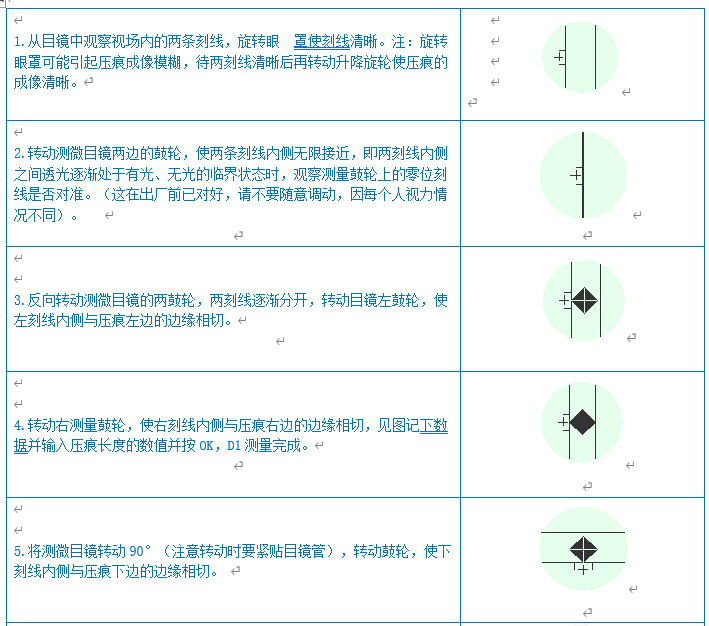


The hardness tester meets the standard:
GB/T4340.1-1999 GB/T 4340.1-1999 Metallic Vickers Hardness Test Part 1: Test Methods
GB/T4340.2-1999 GB/T 4340.2-1999 Metallic Vickers Hardness Test Part 2: Verification of Hardness Machines
International standard ISO 6507-2:2018 "Vickers hardness test for metallic materials - Part 2: Verification and calibration of hardness testers"
ASTM E384-17 Standard Test Method for Knoop and Vickers Hardness of Materials
JJG151- Verification regulation of metal Vickers hardness tester
Standard configuration
|
name
|
quantity
|
name
|
quantity
|
|
Instrument host
|
1platform
|
objective lens40x10x,
|
various1only
|
|
Vickers indenter
|
1only
|
Weights
|
6only
|
|
Cross worktable
|
1individual
|
Weight rod
|
1individual
|
|
Thin film clamping table
|
1individual
|
External power cord
|
1root
|
|
Flat mouth clamping table
|
1individual
|
10xDigital micrometer eyepiece
|
1only
|
|
Spirit level
|
1individual
|
Micro Vickers hardness block(HV1HV0.2)
|
One piece each
|



